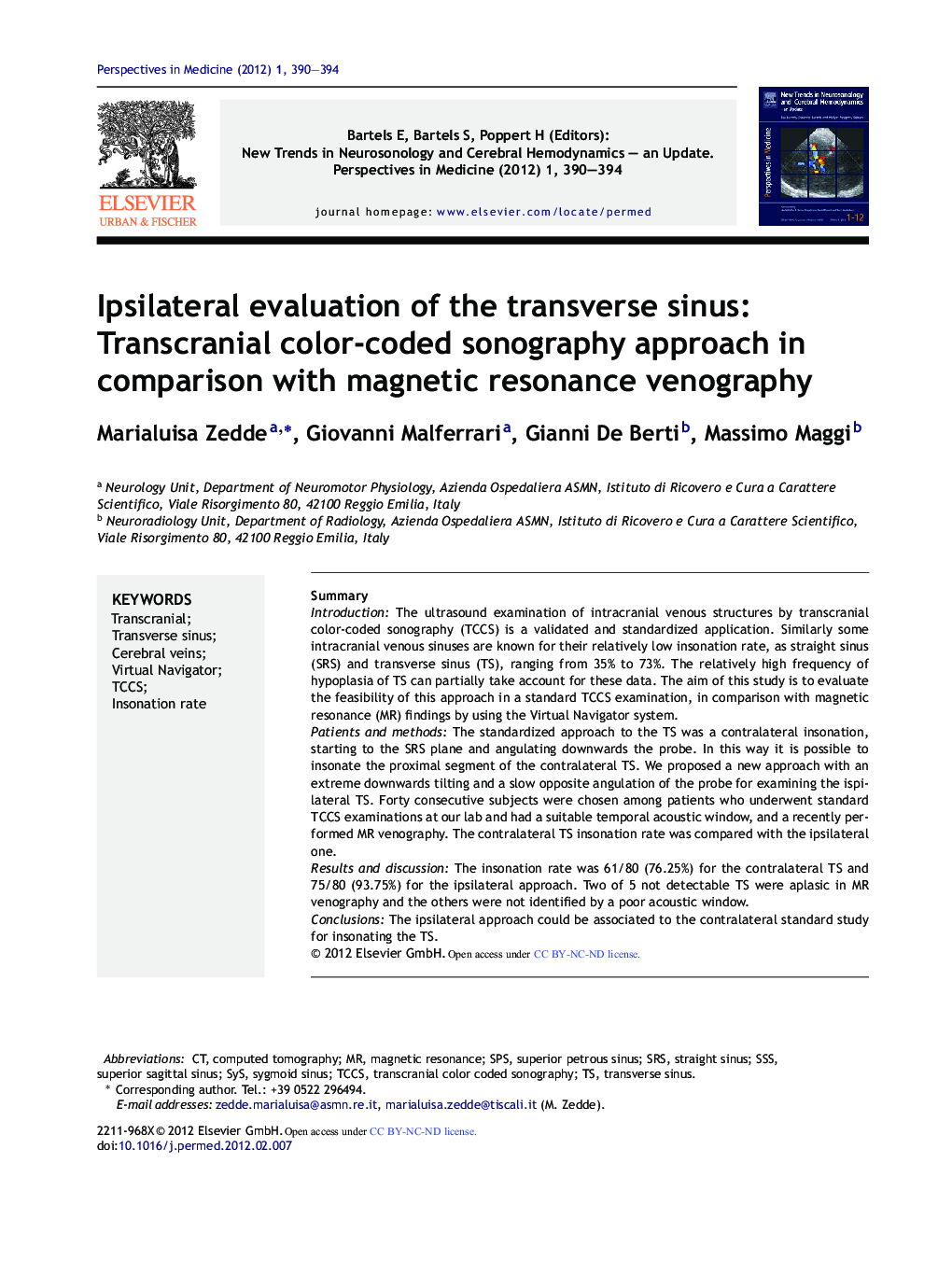| Article ID | Journal | Published Year | Pages | File Type |
|---|---|---|---|---|
| 331851 | Perspectives in Medicine | 2012 | 5 Pages |
SummaryIntroductionThe ultrasound examination of intracranial venous structures by transcranial color-coded sonography (TCCS) is a validated and standardized application. Similarly some intracranial venous sinuses are known for their relatively low insonation rate, as straight sinus (SRS) and transverse sinus (TS), ranging from 35% to 73%. The relatively high frequency of hypoplasia of TS can partially take account for these data. The aim of this study is to evaluate the feasibility of this approach in a standard TCCS examination, in comparison with magnetic resonance (MR) findings by using the Virtual Navigator system.Patients and methodsThe standardized approach to the TS was a contralateral insonation, starting to the SRS plane and angulating downwards the probe. In this way it is possible to insonate the proximal segment of the contralateral TS. We proposed a new approach with an extreme downwards tilting and a slow opposite angulation of the probe for examining the ispilateral TS. Forty consecutive subjects were chosen among patients who underwent standard TCCS examinations at our lab and had a suitable temporal acoustic window, and a recently performed MR venography. The contralateral TS insonation rate was compared with the ipsilateral one.Results and discussionThe insonation rate was 61/80 (76.25%) for the contralateral TS and 75/80 (93.75%) for the ipsilateral approach. Two of 5 not detectable TS were aplasic in MR venography and the others were not identified by a poor acoustic window.ConclusionsThe ipsilateral approach could be associated to the contralateral standard study for insonating the TS.
